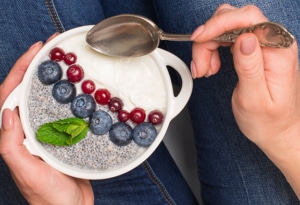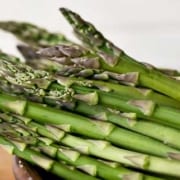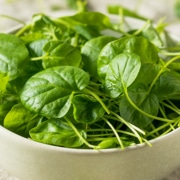The Benefits Of Chia Seeds In A Diabetes Diet | ADS
If you’re like many people in America, reading the phrase “chia seeds” triggers a particular memory: Ch-ch-ch-Chia! Thanks to their kitschy charm and that unforgettable jingle, Chia Pets were one of the most beloved novelty items of the 1980s. But if you thought the seeds of the same name were only good for impersonating a puppy’s fur or politicians’ hairdos, think again.
Chia seeds are actually a diabetes superfood capable of fighting this disease’s most notorious symptoms. Are you already a chia champion, or have you never considered adding them to your diabetes diet before now? Either way, you’ll find all the information you need on these mighty morsels right here on ADS.
What Nutrients Do Chia Seeds Contain?
Humans have been eating chia seeds for millennia. These tiny black seeds, which come from a plant in the mint family known as Salvia hispanica, were a part of Aztec and Mayan diets and culture. People thought of these seeds as highly nutritious in ancient times, and that certainly hasn’t changed over the years. Despite their small size, chia seeds are packed with these nutrients and many others:
Essential Fatty Acids
An ounce or two tablespoons of chia seeds contains 8.7 grams of fat, but don’t let that turn you away! Some types of fat have crucial health benefits, and most of the fats in chia seeds consist of omega-3 and omega-6 fatty acids. These are both types of polyunsaturated fat, which can help lower your LDL cholesterol (AKA “bad” cholesterol).
Fiber
Meanwhile, the same one-ounce serving of chia seeds comes with 11.9 grams of carbohydrates – and 9.8 grams of fiber. Since your body doesn’t digest fiber like other carbs, it can help regulate your blood sugar. Fiber can give your digestive system a boost and keep your cholesterol under control, too.
Antioxidants
Like blueberries, dark chocolate, and other well-known superfoods, chia seeds are rich in antioxidants. These can help you out by counteracting the effects of free radicals, which can play a role in aging and diseases like cancer. The protective antioxidants in chia seeds include caffeic acid, myricetin, quercetin, kaempferol and chlorogenic acid.
Magnesium
You don’t have to eat many chia seeds to get the magnesium your body needs. A one-ounce serving of these seeds includes 23 percent of your daily suggested magnesium intake. Magnesium contributes to all kinds of bodily functions, such as regulating your heartbeat and moving your muscles. And since insulin resistance is linked to below-average magnesium levels, people with diabetes need to load up on this nutrient.
The Ways Chia Seeds May Fight Diabetes Symptoms
Along with their general health benefits, research suggests chia seeds come with some indispensable perks for people with diabetes. When you eat chia seeds regularly, they could be able to:
Lower Your Blood Sugar
Thanks to the fiber and other nutrients they contain, chia seeds are believed to play a role in regulating blood sugar. In addition to that, animal studies suggest these seeds may boost sensitivity to insulin. Additional research still needs to take place on humans, but the results of studies that have been completed are promising.

Help With Weight Loss
The fiber in chia seeds could also make it easier for you to lose weight – which is notable since weight loss can assist with diabetes management. That’s because much of the fiber they contain is “soluble fiber,” which may create feelings of fullness after eating a meal. While studies of this effect have had mixed results, chia seeds may be worth a try if you’re trying to lose weight.
Reduce Your Risk Of Heart Disease
Soluble fiber and omega-3 fatty acids are known to lower LDL cholesterol – and chia seeds have no shortage of both nutrients. Diabetes comes with a heightened risk of heart disease, so it’s good to include controlled portions of fiber and fatty acids in your diet. However, more research is needed before scientists can conclusively say that chia seeds, in particular, can improve people’s heart health.
Enjoy Chia Seeds With These Tips
Chia seeds don’t have the boldest flavor in the world – but that’s not a bad thing! Since they don’t call too much attention to themselves and are flavorless, these seeds are easy to add to many different dishes. Check out our list of great ways to eat chia seeds:
- Sprinkle seeds on cereal, yogurt, sauces, salads, and more

- Mix seeds into drinks, add to tea and baked goods
- Mix ground seeds with peanut butter for a more nutritious spread
- Add seeds to soup and stews to thicken
- Add seeds to salad dressing or sprinkle on salad for a healthy crunch
- Blend chia seeds into smoothies
- Eat the seeds whole and raw as a snack
- Add chia seeds to beaten eggs, soak for 10 minutes and make in omelets
- Grind seeds and add to hot low-fat or nonfat milk for a nutty porridge
- Throw seeds into a vegetable stir fry
- Add whole seeds to unsweetened granola
- Soak chia seeds in milk and mix through hot old-fashioned oatmeal or add to mashed potatoes
- Mix ground seeds with lean ground beef or turkey to make meatballs
- Cook brown rice in low sodium vegetable broth and stir in the chia seeds when the rice is cooked
- Make chia pudding by adding whole seeds to lowfat milk, nut milk, or unsweetened soy milk
- Stir whole seeds through cooked lentils
- Add ground chia seeds to flour when making bread
Go Shopping For Chia Seeds – Let Us Handle The Rest
While you probably won’t have trouble finding chia seeds in your nearest supermarket, the same isn’t true for diabetes supplies. Many people with diabetes need to use insulin, glucose meters, and diabetes testing supplies every day. To be sure you have a steady supply of these life-saving items, order them on ADS today!













